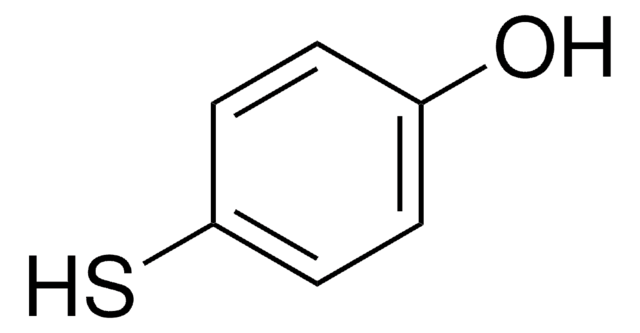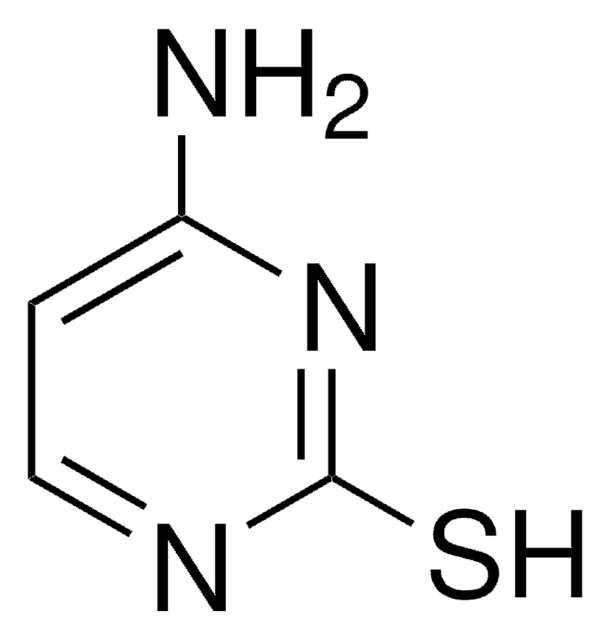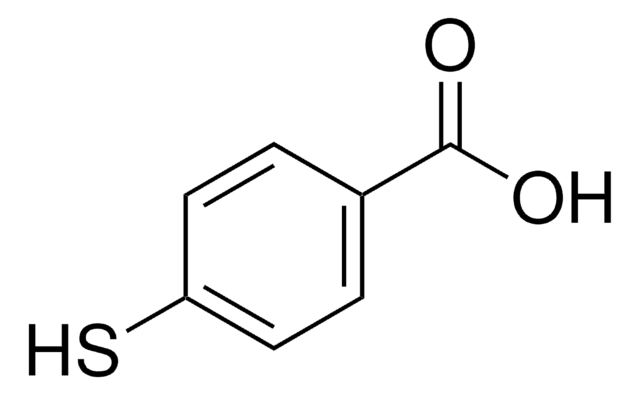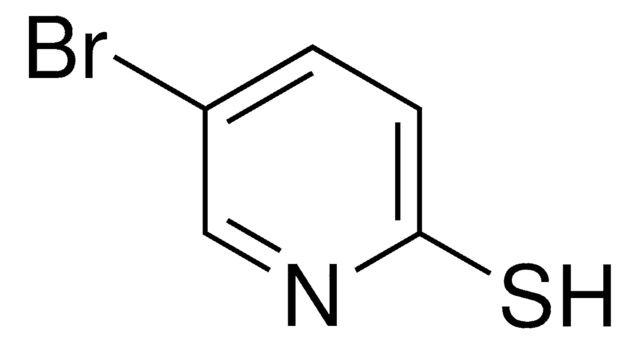148202
4-Mercaptopyridine
95%
Synonym(s):
4-Pyridinethiol
Sign Into View Organizational & Contract Pricing
All Photos(1)
About This Item
Empirical Formula (Hill Notation):
C5H5NS
CAS Number:
Molecular Weight:
111.16
EC Number:
MDL number:
UNSPSC Code:
12352100
PubChem Substance ID:
NACRES:
NA.22
Quality Level
Assay
95%
storage temp.
2-8°C
SMILES string
Sc1ccncc1
InChI
1S/C5H5NS/c7-5-1-3-6-4-2-5/h1-4H,(H,6,7)
InChI key
FHTDDANQIMVWKZ-UHFFFAOYSA-N
Related Categories
Application
4-Mercaptopyridine was used as a probe molecule to study the performance of the gold nanorod (AuNR)/polycaprolactone (PCL) fibrous mesh.
Signal Word
Warning
Hazard Statements
Precautionary Statements
Hazard Classifications
Eye Irrit. 2 - Skin Irrit. 2 - STOT SE 3
Target Organs
Respiratory system
Storage Class Code
11 - Combustible Solids
WGK
WGK 3
Flash Point(F)
Not applicable
Flash Point(C)
Not applicable
Personal Protective Equipment
dust mask type N95 (US), Eyeshields, Gloves
Certificates of Analysis (COA)
Search for Certificates of Analysis (COA) by entering the products Lot/Batch Number. Lot and Batch Numbers can be found on a product’s label following the words ‘Lot’ or ‘Batch’.
Already Own This Product?
Find documentation for the products that you have recently purchased in the Document Library.
Customers Also Viewed
Tingting Lou et al.
Analytical and bioanalytical chemistry, 401(1), 333-338 (2011-05-17)
A surface-enhanced Raman scattering (SERS) strategy based on 4-mercaptopyridine (MPY)-modified gold nanoparticles (AuNPs) was developed for the rapid and sensitive detection of melamine in milk powder. The SERS measurement of melamine strongly relied on the "hotspot" effect, in which AuNPs
Alexander Quinn et al.
Sensors (Basel, Switzerland), 19(16) (2019-08-15)
Conceptual and commercial examples of implantable sensors have been limited to a relatively small number of target analytes, with a strong focus on glucose monitoring. Recently, surface-enhanced Raman spectroscopy (SERS) pH sensors were demonstrated to track acid-producing enzymatic reactions targeting
Sumeng Zou et al.
Scientific reports, 7(1), 6186-6186 (2017-07-25)
Surface-enhanced Raman scattering (SERS) technology combines with chemometric method of principal component analysis (PCA) was used to calculate the composition of chemical mixtures in solution. We reported here that there exists composition discrepancy between molecules in solution and molecules adsorbed
Xiaoqi Fu et al.
The Journal of chemical physics, 134(2), 024707-024707 (2011-01-19)
We obtain the surface enhanced Raman spectra of 4-mercaptopyridine on lead sulfide (PbS) quantum dots as a function of nanoparticle size and excitation wavelength. The nanoparticle radii are selected to be less than the exciton Bohr radius of PbS, enabling
Peng Ji et al.
Frontiers in chemistry, 7, 245-245 (2019-05-07)
Direct observation of the surface-enhanced Raman scattering (SERS) of molecules adsorbed on nano-sized zirconia (ZrO2) substrates was first reported without the need for the addition of metal particles. It was found that ZrO2 nanoparticles can exhibit unprecedented Raman signal enhancements
Our team of scientists has experience in all areas of research including Life Science, Material Science, Chemical Synthesis, Chromatography, Analytical and many others.
Contact Technical Service



